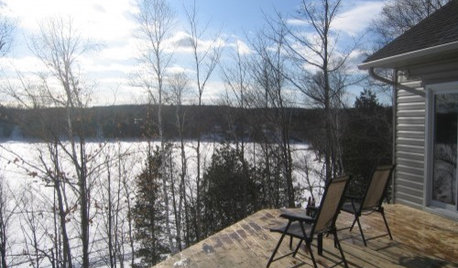Laundry room questions--
kirkhall
11 years ago
Related Stories

REMODELING GUIDESSurvive Your Home Remodel: 11 Must-Ask Questions
Plan ahead to keep minor hassles from turning into major headaches during an extensive renovation
Full Story
KITCHEN DESIGN9 Questions to Ask When Planning a Kitchen Pantry
Avoid blunders and get the storage space and layout you need by asking these questions before you begin
Full Story


DOORS5 Questions to Ask Before Installing a Barn Door
Find out whether that barn door you love is the right solution for your space
Full Story
FEEL-GOOD HOMEThe Question That Can Make You Love Your Home More
Change your relationship with your house for the better by focusing on the answer to something designers often ask
Full Story
REMODELING GUIDES13 Essential Questions to Ask Yourself Before Tackling a Renovation
No one knows you better than yourself, so to get the remodel you truly want, consider these questions first
Full Story
MOST POPULAR8 Questions to Ask Yourself Before Meeting With Your Designer
Thinking in advance about how you use your space will get your first design consultation off to its best start
Full Story
REMODELING GUIDESPlanning a Kitchen Remodel? Start With These 5 Questions
Before you consider aesthetics, make sure your new kitchen will work for your cooking and entertaining style
Full Story
MOVINGHiring a Home Inspector? Ask These 10 Questions
How to make sure the pro who performs your home inspection is properly qualified and insured, so you can protect your big investment
Full StorySponsored
Most Skilled Home Improvement Specialists in Franklin County
More Discussions







Annie Deighnaugh
bevangel_i_h8_h0uzz
Related Professionals
Clive Architects & Building Designers · South Elgin Architects & Building Designers · Buena Park Home Builders · Fresno Home Builders · Prichard Home Builders · Sarasota Home Builders · Alhambra General Contractors · Coshocton General Contractors · Milton General Contractors · Murrysville General Contractors · Parsons General Contractors · Reisterstown General Contractors · Rolla General Contractors · Saint Andrews General Contractors · Shaker Heights General Contractorsworthy
User
gaonmymind
vitiminj
kirkhallOriginal Author
Houseofsticks
lolauren
User
bevangel_i_h8_h0uzz
kirkhallOriginal Author
aa62579
kas4
Annie Deighnaugh